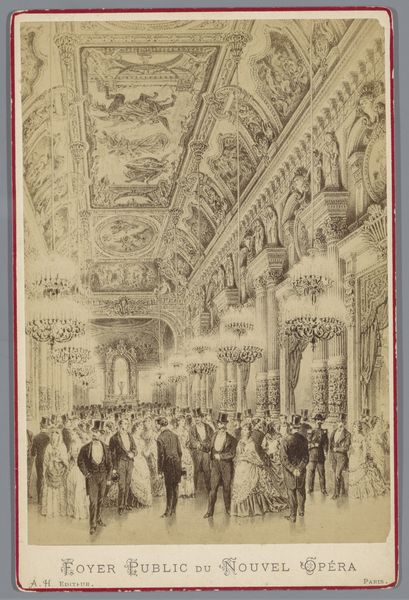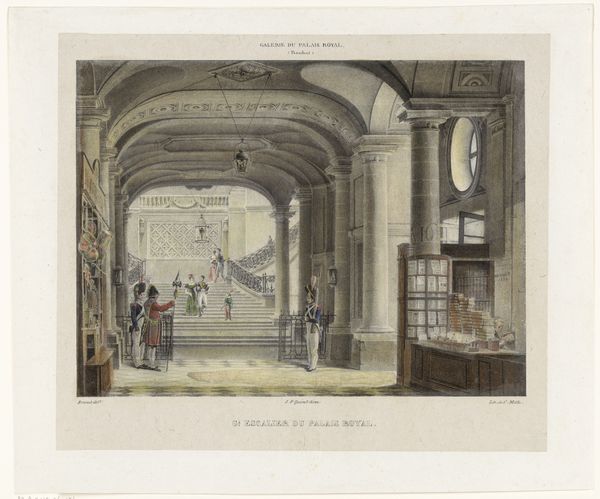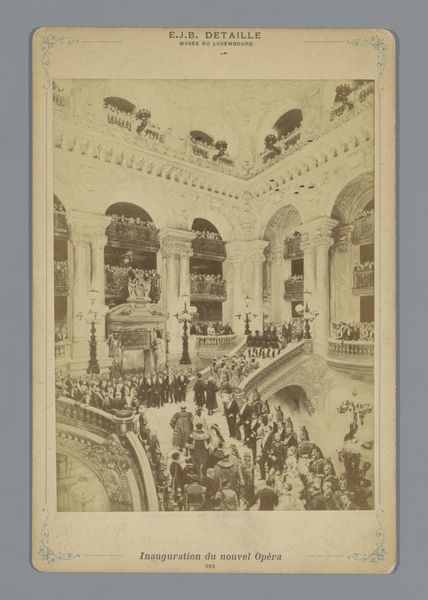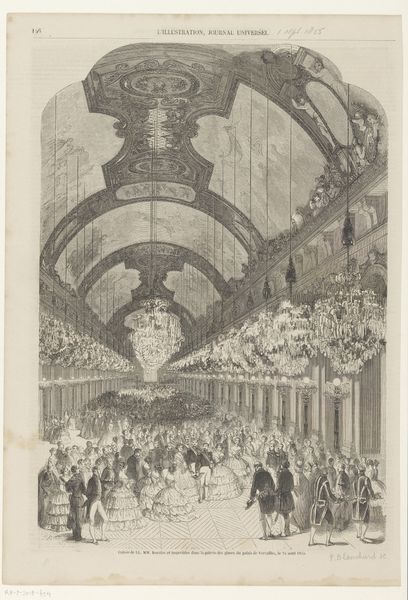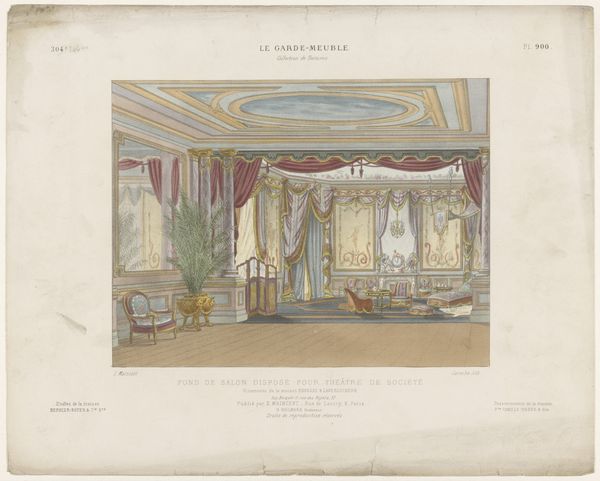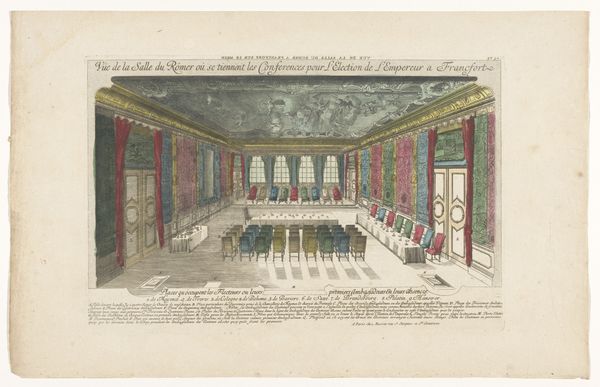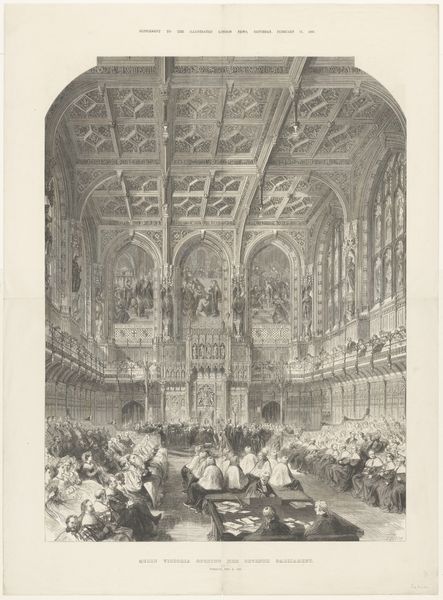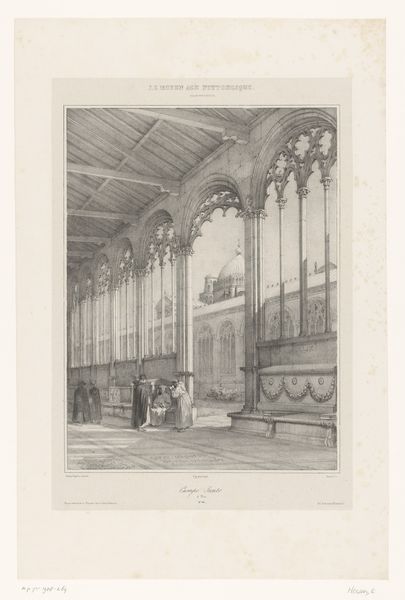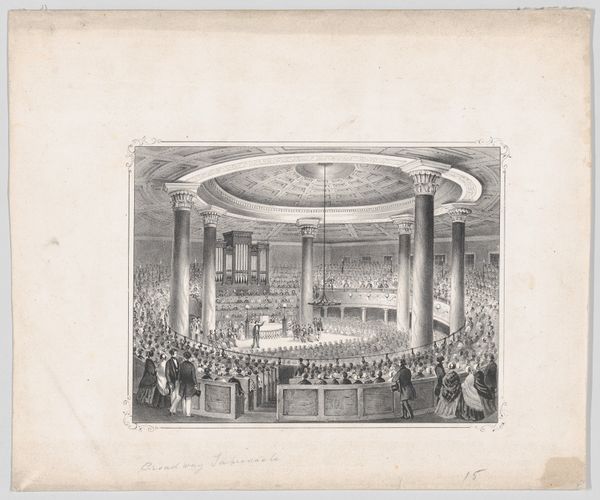
print, paper, ink
# print
#
paper
#
ink
#
watercolor
Dimensions: height 180 mm, width 117 mm
Copyright: Rijks Museum: Open Domain
Editor: This is "Hoofdgalerij op de Wereldtentoonstelling in Amsterdam, 1883," created in 1883, now residing at the Rijksmuseum. It seems to be a print made using etching, engraving, and other ink techniques on paper. What strikes me most is the contrast between the rigid architecture and the leisure of the people depicted. What story do you think this piece is telling us? Curator: From a materialist perspective, the piece is fascinating. Note the sharp delineation in labor here – the architect and builders who conceived this grand hall of steel and glass versus the consumers of art and finery promenading within it. What’s being showcased and consumed inside becomes significant. Editor: It does seem to highlight the rise of consumer culture. Are those banners and flags signifiers of different producers competing for buyers? Curator: Precisely! Reflect on the etching and engraving process: how this allowed for mass reproduction and dissemination of images. Think about the labor involved in creating these prints, making them accessible to a wider audience than paintings. How does that democratization affect perceptions of art and craft? Is it elevating these artisan skills or cheapening their labor? Editor: So the artwork itself becomes a commodity, further driving that consumer engine? And the world exposition, recorded here in print, becomes a crucial marketplace. Curator: Exactly. It blurs the line between documenting a moment and participating in the promotional landscape of the 1880s. Note, too, the influx of ‘Japonisme’ – evidenced in certain bronze works on display. Colonial dynamics influence the artistic style and the source materials in the space. Editor: I hadn't considered the labor of production in that detail before. It makes me think about who profited and whose work went unacknowledged. Thanks for sharing that. Curator: And I thank you, it reminds me that we can examine an image not just for aesthetics, but also for its material origins, to truly see its historical weight.
Comments
No comments
Be the first to comment and join the conversation on the ultimate creative platform.
